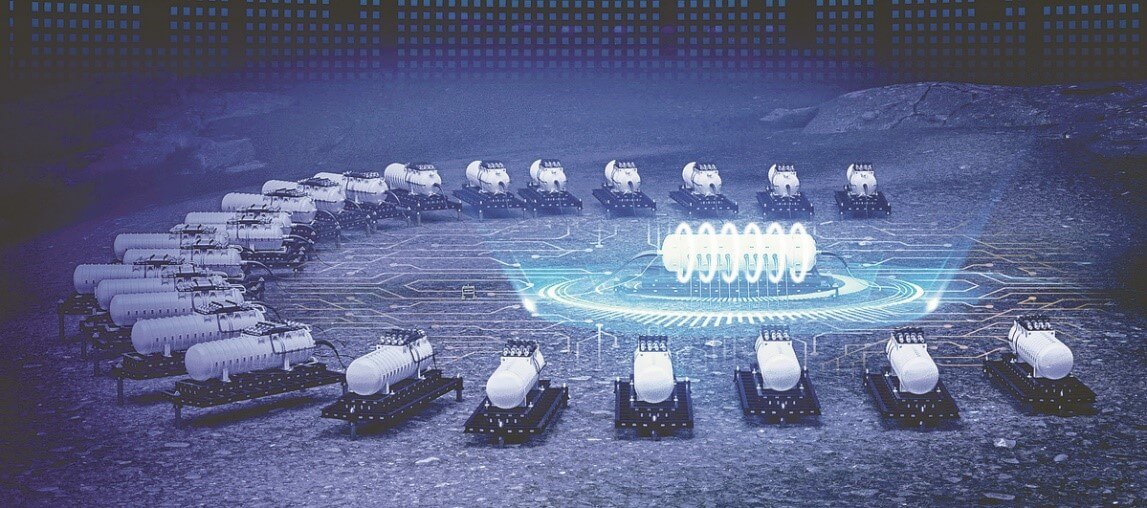Climate change is an issue that is on the priority list of most countries around the world. While a lot is being done across all levels to mitigate this issue, let us explore how underwater data centers can help alleviate it.

Fig 1.1 Data Centers and Server underwater
Why place data centers under water?
The concept of underwater data center was initiated by Microsoft with a project called Natick, in the Pacific Ocean. Phase 1 was a vessel carrying one rack, containing 24 servers. Following Microsoft’s initial proof-of-concept, Phase 2 of the Natick project was tested in the ocean with a shipping container-sized data center carrying 12 racks, containing 864 servers. Furthermore, underwater data centers were tested in Los Angeles. As this testing has triggered speculations, cloud giants like AWS, Google and other leading cloud service providers could also be interested in investing in this testing.
Data centers are placed underwater to utilize the benefits of sea temperature, sustainability, low latency, quick provisioning, and utilization of natural energy sources.
Temperature
The key benefit of placing data centers underwater is the low temperature. The ocean bed is always cool which helps in nullifying the heat produced by the servers. All the cooling is naturally produced by sea at zero cost. While in on-premise data centers, cooling the servers is a significant component in the standard operating procedure and it involves certain cost. Therefore, if underwater data centers can reduce cooling costs, then they are able to hold an operating cost advantage over land-based data centers.
Efficiency
Since more than 50% of the world population lives within 200 kilometer of the coastal areas, underwater data centers can solve the low latency issue by tuning the time it takes to reach the destination from the source. Underwater data centers can deliver low-latency connectivity to coastal populations.
Time to Market
In general, underwater data centers are configured as prefabricated and standardized modules which expedites the construction and delivery schedules. The deployment time frame for the underwater data center is nearly 3 months from the factory to go live, the primary goal of these data centers is to deploy the facilities in rapid mode when compared to the on-premise data centers. The policies and procedures required for underwater data centers are moderate when compared to on-premise data centers.
Reliability
As the data centers are built with prefabricated modules and precise specifications in a controlled factory environment, they are highly reliable, and the performance is seamless. The data centers could be re-furbished after every five years and redeployed too and the process continues for 4 cycles.
How underwater data centers can help the environment
- Underwater data centers consume renewable energy sources that produce no greenhouse gas. For example, renewable energy sources for underwater data centers include offshore wind, solar, tidal, and wave power.
- No water is required for cooling or any other operational purpose.
- These facilities do not utilize the fresh water which are used for the domestic purposes.
- When compared with on-premise facilities, underwater data centers operate with a “perfect” water usage effectiveness (WUE) of exactly zero.
- On monitoring, the consumption of power, temperature, internal humidity levels, fan speed, sound, and speed of the current, smoke and other energy sources are less when compared to on-premise data centers.
- Oxygen-free environment under water allows servers to last much longer by avoiding the corrosion.
While the underwater datacenters and servers are in multiple phases of testing, the results may be favoring the entities in POC or testing mode. However, when mass number of servers and data centers are operated underwater in production mode, it might be possible that the results are unexpected. As the oceans are already polluted with many types of wastes, the marine life is threatened, and results are reflected in the coastal areas. While data centers and servers are being planned to migrate to underwater, safety of the water bodies should also be ensured which directly impacts humans too.

Author
Sundaramoorthy S
Sundar has more than 13 years of experience in IT, IT security, IDAM, PAM and MDM project and products. He is interested in developing innovative mobile applications which saves time and money. He is also a travel enthusiast.




